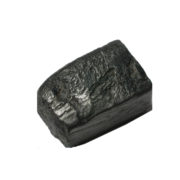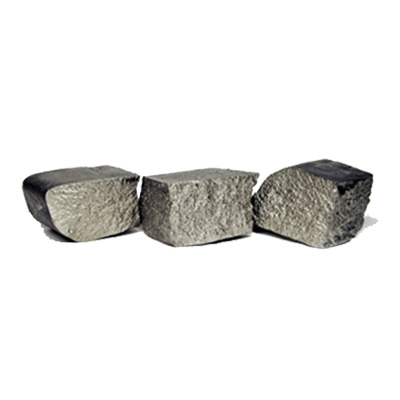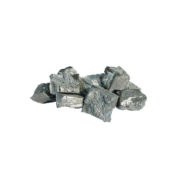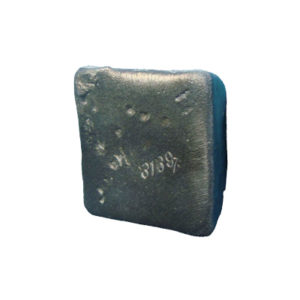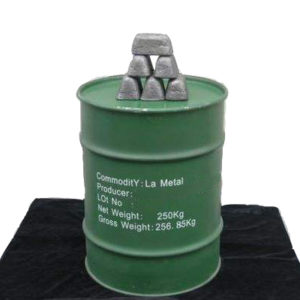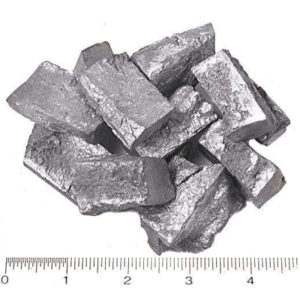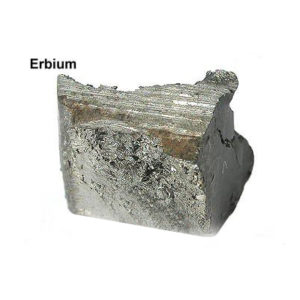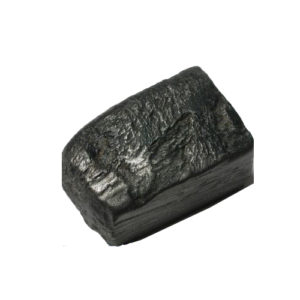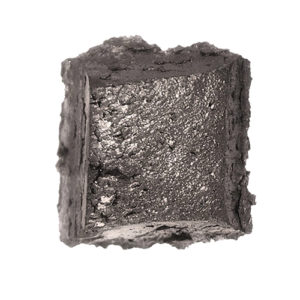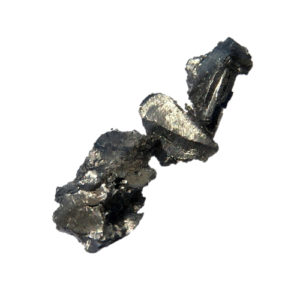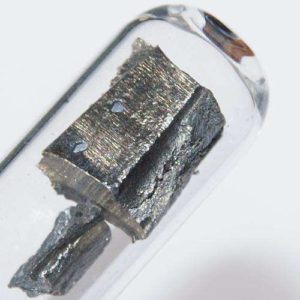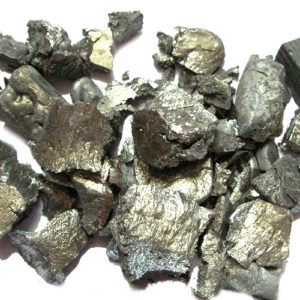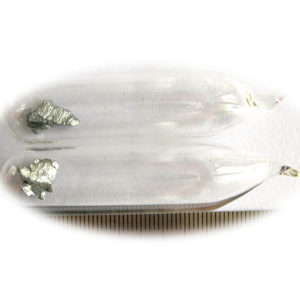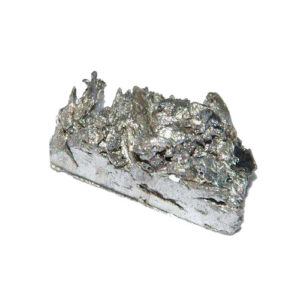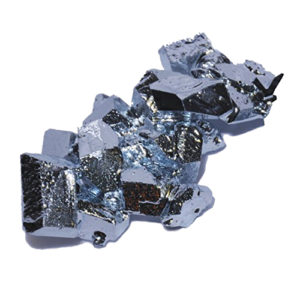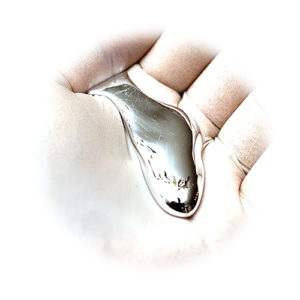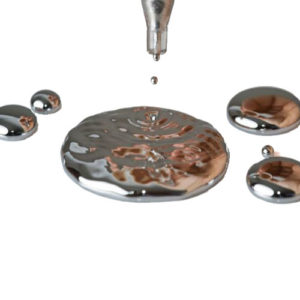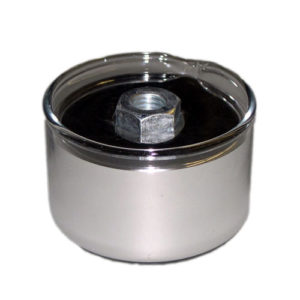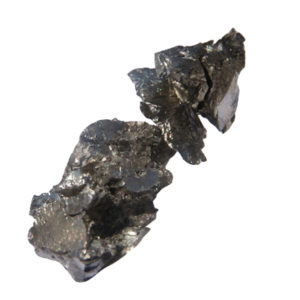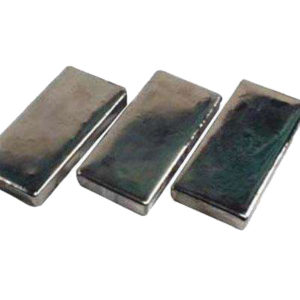Cerium 58Ce 7440-45-1
Cerium is a soft, ductile, silvery-white metallic chemical element with symbol Ce and atomic number 58. Cerium tarnishes when exposed to air, and it is soft enough to be cut with a knife. Cerium is the second element in the lanthanide series, and while it often shows the +3 state characteristic of the series, it also exceptionally has a stable +4 state that does not oxidize water. It is also traditionally considered to be one of the rare earth elements. Cerium has no biological role, and is not very toxic.
Despite always being found in combination with the other rare earth elements in minerals such as monazite and bastnäsite, cerium is easy to extract from its ores, as it can be distinguished among the lanthanides by its unique ability to be oxidized to the +4 state. It is the most common of the lanthanides, followed by neodymium, lanthanum, and praseodymium. It is the 26th most abundant element, making up 66 ppm of the Earth’s crust, half as much as chlorine and five times as much as lead.
Chemistry
Cerium tarnishes in air, forming a spalling oxide layer like iron rust; a centimeter-sized sample of cerium metal corrodes completely in about a year. It burns readily at 150 °C to form the pale-yellow cerium(IV) oxide, also known as ceria:
Ce + O2 → CeO2
This may be reduced to cerium(III) oxide with hydrogen gas. Cerium metal is highly pyrophoric, meaning that when it is ground or scratched, the resulting shavings catch fire.This reactivity conforms to periodic trends, since cerium is one of the first and hence one of the largest lanthanides.Cerium(IV) oxide has the fluorite structure, similarly to the dioxides of praseodymium and terbium. Many nonstoichiometric chalcogenides are also known, along with the trivalent Ce2Z3 (Z = S, Se, Te). The monochalcogenides CeZ conduct electricity and would better be formulated as Ce3+Z2−e−. While CeZ2 are known, they are polychalcogenides with cerium(III): cerium(IV) chalcogenides remain unknown.
Cerium(IV) oxide
Cerium is a highly electropositive metal and reacts with water. The reaction is slow with cold water but speeds up with increasing temperature, producing cerium(III) hydroxide and hydrogen gas:[15]
2 Ce (s) + 6 H2O (l) → 2 Ce(OH)3 (aq) + 3 H2 (g)
Cerium metal reacts with all the halogens to give trihalides:
2 Ce (s) + 3 F2 (g) → 2 CeF3 (s) [white] 2 Ce (s) + 3 Cl2 (g) → 2 CeCl3 (s) [white] 2 Ce (s) + 3 Br2 (g) → 2 CeBr3 (s) [white] 2 Ce (s) + 3 I2 (g) → 2 CeI3 (s) [yellow]
Reaction with excess fluorine produces the stable white tetrafluoride CeF4; the other tetrahalides are not known. Of the dihalides, only the bronze diiodide CeI2 is known; like the diiodides of lanthanum, praseodymium, and gadolinium, this is a cerium(III) electride compound. True cerium(II) compounds are restricted to a few unusual organocerium complexes.[20][21]
Cerium dissolves readily in dilute sulfuric acid to form solutions containing the colorless Ce3+ ions, which exist as a [Ce(H2O)9]3+ complexes:
2 Ce (s) + 3 H2SO4 (aq) → 2 Ce3+ (aq) + 3 SO2−
4 (aq) + 3 H2 (g)
The solubility of cerium is much higher in methanesulfonic acid.[22] Cerium(III) and terbium(III) have ultraviolet absorption bands of relatively high intensity compared with the other lanthanides, as their configurations (one electron more than an empty or half-filled f-subshell respectively) make it easier for the extra f electron to undergo f→d transitions instead of the forbidden f→f transitions of the other lanthanides.[23] Cerium(III) sulfate is one of the few salts whose solubility in water decreases with rising temperature.
Ceric ammonium nitrate
Cerium 58Ce 7440-45-1(IV) aqueous solutions may be prepared by reacting cerium(III) solutions with the strong oxidising agents peroxodisulfate or bismuthate. The value of E⦵(Ce4+/Ce3+) varies widely depending on conditions due to the relative ease of complexation and hydrolysis with various anions, though +1.72 V is a usually representative value; that for E⦵(Ce3+/Ce) is −2.34 V. Cerium is the only lanthanide which has important aqueous and coordination chemistry in the +4 oxidation state. Due to ligand-to-metal charge transfer, aqueous cerium(IV) ions are orange-yellow. Aqueous cerium(IV) is metastable in water and is a strong oxidising agent that oxidizes hydrochloric acid to give chlorine gas. For example, ceric ammonium nitrate is a common oxidising agent in organic chemistry, releasing organic ligands from metal carbonyls.In the Belousov–Zhabotinsky reaction, cerium oscillates between the +4 and +3 oxidation states to catalyse the reaction. Cerium(IV) salts, especially cerium(IV) sulfate, are often used as standard reagents for volumetric analysis in cerimetric titrations.
The nitrate complex [Ce(NO3)6]2− is the most common cerium complex encountered when using cerium(IV) is an oxidising agent: it and its cerium(III) analogue [Ce(NO3)6]3− have 12-coordinate icosahedral molecular geometry, while [Ce(NO3)5]2− has 10-coordinate bicapped dodecadeltahedral molecular geometry. Cerium nitrates also form 4:3 and 1:1 complexes with 18-crown-6 (the ratio referring to that between cerium and the crown ether). Halogen-containing complex ions such as CeF4−8, CeF2−6, and the orange CeCl2−6 are also known.Organocerium chemistry is similar to that of the other lanthanides, being primarily that of the cyclopentadienyl and cyclooctatetraenyl compounds. The cerium(III) cyclooctatetraenyl compound has the uranocene structure.

